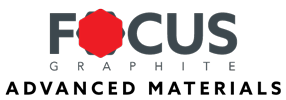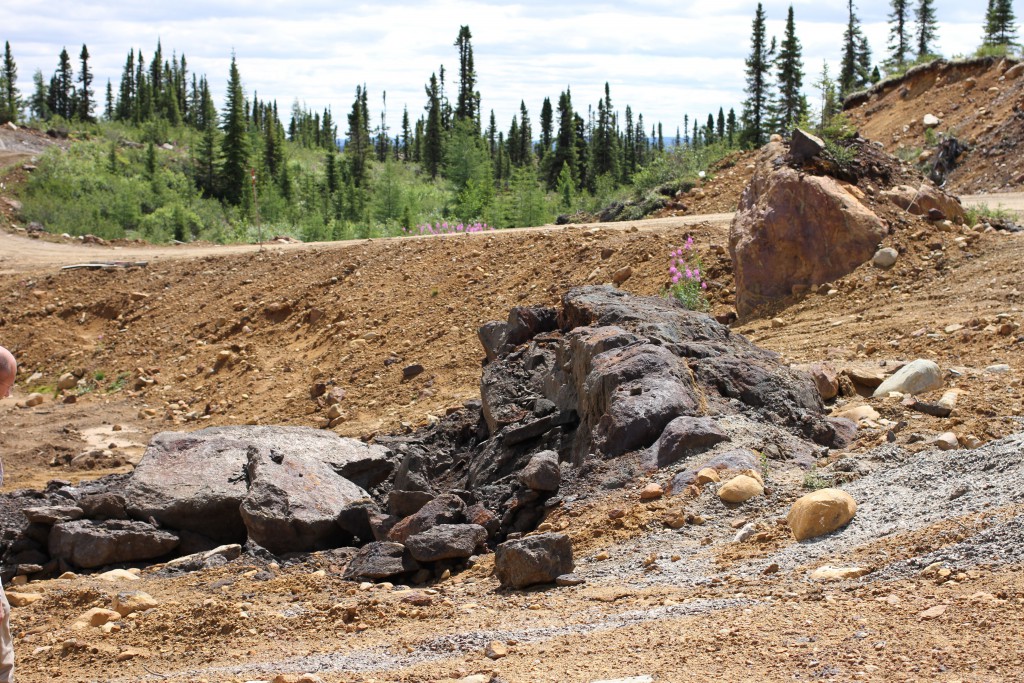In March 2023, Focus Graphite announced an update to its 2014 feasibility study that positioned Lac Knife as potentially one the lowest-cost, highest margin future North American producers of high-purity graphite concentrate for use in high-performance Li-Ion batteries.
Under the 2023 Feasibility Study Update (FSU), the Lac Knife project will be developed based on a conventional open-pit, shovel-and-truck and drill-and-blast mining operation accompanied by a processing plant designed to produce 50,000 t/y of graphite, containing 47,781 t/y of high-grade salable concentrate. The mining production schedule is based on one shift of 10 hours, 7 days a week, while the processing plant will be operated on 24 hours a day, 365 days a year basis. The mine life is scheduled to be 27 years with total ore mined of 9,31 million tonnes grading 14.97% Cg.
The Lac Knife Project is designed as a stand-alone business operation to produce a line of high purity flake graphite concentrates destined mainly for the North American and European battery anode materials industry and for other specialty applications using natural flake graphite from Québec. The updated Project feasibility study positions Focus to become a leading supplier of these graphite concentrates to EV battery manufacturers.
Lac Knife is unique in that all natural flake graphitic concentrates produced with flake size above 200 mesh (75 microns) size grade more than 98% Cg. This allows Focus to divert finer sized products that would typically be difficult to sell due to their flake size to higher value-added products such as spherical graphite for batteries, due to the high carbon content of 98% carbon.
Although the Lac Knife mine will be a conventional open-pit mining operation using diesel-driven equipment, Focus is determined to utilize all electric mobile equipment as soon as it becomes economically available in order to make the Project a carbon-free operation, powered by low-cost hydroelectricity readily available in the area from Hydro-Québec. In an effort to improve environmental mine safety, Focus is planning a dry tailings system instead of the originally planned tailings pond and reclaim system, along with new mitigation measures designed to minimize the risks of acid mine drainage in the tailings pile.
The Lac Knife open pit mine’s maximum footprint increases by 59.5% to 319,000 m2 (0.32 km2) relative to the 2014 design1, while the maximum depth of the pit from surface is extended by 50 m to 150 m relative to the 2014 design (max. depth: 100 m). At its maximum extension, the Lac Knife open pit’s footprint of will be 75 times smaller than that of the nearby Mont Wright iron ore mine operated by ArcelorMittal (surface area: 24 km2).
1 Note: The results of the 2014 feasibility study are historical results and are not considered compliant with NI 43-101 reporting standards.
The Initial CAPEX for the project, outlined in the table below, is estimated at $235.6 million, a 42.8% rise relative to the 2014 FS1, while Life of Mine (LoM) sustaining capital totals $50.3 million, up $28.1 million from the 2014 FS1. Factors that account for the significant rise in initial CAPEX and sustaining capital include: Costs related to (a) the upgraded design of the Lac Knife waste rock and tailings storage facility (TSF) and the addition of a water treatment plant; (b) the purchase of a fleet of mobile mining equipment by the Company as the 2014 FS1 called for a contractor to operate the mine; (c) costs of technological improvements to the Lac Knife concentrator; (d) inflation; and (e) the decrease in the value of the Canadian dollar relative to the US dollar.
| Lac Knife Capital Expenditure (CDN$ millions) |
| Cost Centres |
Initial Cost |
Sustaining Cost |
LoM |
| Mine Development |
$8.07 |
$13.71 |
$21.78 |
| Mine Equipment and Facilities |
$19.66 |
$6.11 |
$25.77 |
| Crushing and Concentrator |
$99.24 |
$0.50 |
$99.74 |
| Tailings Management |
$22.73 |
$30.21 |
$52.94 |
| Infrastructure |
$32.50 |
$0.00 |
$32.50 |
| Indirect Costs |
$29.30 |
$0.00 |
$29.30 |
| Contingency |
$25.00 |
$0.00 |
$25.00 |
| Total Capital Expenditure |
$236.5 |
$50.53 |
$287.03 |
The LoM OPEX, outlined in the table below, rises by $99.46 to $540.48 per tonne of concentrate relative to the 2014 FS. The rise in OPEX is mainly related to the new TSF and water treatment plant, the significant expansion of the Lac Knife open-pit mine and increased concentrate trucking costs.
| Lac Knife Operational Expenditures (27-year average) |
| Cost Centres |
CDN$ per Tonne of Concentrate |
| Mining |
$129.76 |
| Processing Costs |
$310.56 |
| Tailings Costs |
$4.38 |
| General Administration Mine Site |
$95.78 |
| Total Operating Costs |
$540.48 |
The annual ore milling capacity is 365,320 tonnes per year to produce 47,781 tonnes of concentrate annually at a cost of $540.48 per tonne. The concentrate will grade 97.8% Graphitic Carbon (Cg) on average for a 27-year open pit mine life based on current open pit reserves. All graphite concentrate produced with flakes larger than 150 mesh (89 microns) contain more than 99.4% Cg.
The Feasibility Study Update, based on a 27-year mine life, produced a Pre-tax Net Present Value (NPV) of $500.9 million calculated at a discounted cash flow (DCF) rate of 8% Pre-tax, the financial model has an Internal Rate of Return (IRR) of 28.70% and a capital payback period of 2.8 years. The after-tax financial model has an NPV of $285.7 million calculated at a DCF rate of 8%, and with an IRR of 22.4% and a capital payback of 3.3 years. These numbers are comparable to with those of the historical 2014 Feasibility Study, despite a series of fundamental modifications to the design of the project.
Results from the 2023 Feasibility Study Update indicate that the Lac Knife Project is viable economically with a base case scenario that includes a concentrator production line rate of 47,781 tonnes of concentrate annually at an average mill feed rate of 365,320 tonnes per year of mineral reserves over a 27-year mine life. A concentrator availability of 93% was used for the study. The additional measured, indicated, and inferred resources will continue to be evaluated to develop the mid and long-term growth profile.
Click Here to view the complete technical report for the 2023 feasibility study update




